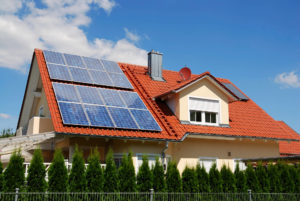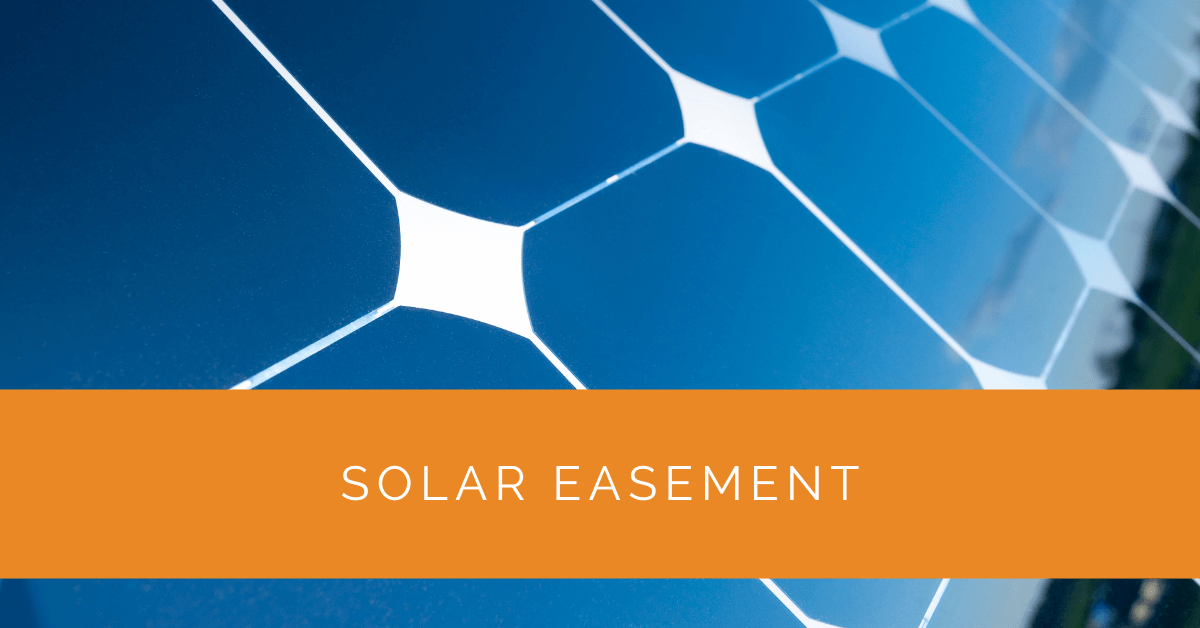Solar panels have become increasingly popular in our quest for clean and sustainable energy. However, the effectiveness of solar energy systems can be hindered by shading or obstructions. To protect solar access, property owners can establish a solar easement. In this article, we will explore the concept of a solar easement, its legal implications, and the importance of obtaining one to ensure access to direct sunlight for solar energy systems.
Contents
- 1 Key Takeaways
- 2 Understanding Solar Easements
- 3 Solar Access Laws and Regulations
- 4 Obtaining a Solar Easement
- 5 Protecting Solar Access
- 6 Case Study: Securing Solar Access Through Easements
- 7 Expert Insights From Our Solar Panel Installers About Solar Easements
- 8 Experience Solar Excellence with Us!
- 9 Conclusion
Key Takeaways
- A solar easement is a written agreement that grants property owners the right to unobstructed access to sunlight for their solar energy systems.
- Solar easements protect solar access by ensuring neighboring structures or vegetation do not block the direct sunlight required for optimal energy generation.
- Obtaining a solar easement involves research, negotiation, and drafting a legally binding document to secure the rights to solar access.
Understanding Solar Easements
Defining a Solar Easement
A solar easement is a legal agreement granting property owners certain rights to ensure access to direct sunlight for solar energy systems. It is a written instrument created in writing, often as a contract or a legal document. The purpose of a solar easement is to protect solar access and prevent the obstruction of sunlight by neighboring structures or vegetation.
Solar Easement Rights
By establishing a solar easement, property owners have the right to unobstructed access to sunlight on their property for their solar energy system. This includes the right to have sunlight pass over or through adjacent properties at specific vertical and horizontal angles, allowing for optimal energy generation.
Legal Implications
A solar easement is a legal agreement that becomes a part of the property’s deed. It creates a legally enforceable right, assuring property owners that their access to sunlight will be protected. This means that the solar easement also binds future property owners and must respect the rights granted under it.
Solar Access Laws and Regulations
State and Local Solar Access Laws
Solar access laws vary by jurisdiction, with some states having specific statutes or regulations that govern solar easements. Additionally, local governments may have their own rules and regulations regarding solar access. These laws are in place to protect property owners’ rights and promote solar energy use.
Role of Local Governments
Local governments play a vital role in implementing and enforcing solar access laws. They collaborate with property owners to ensure compliance with regulations and assist in establishing solar easements. Property owners need to engage with their local planning departments and authorities to understand the specific requirements and opportunities related to solar access.

Obtaining a Solar Easement
Steps in Obtaining a Solar Easement
Getting a solar easement involves several steps:
- Research and Preparation: Property owners should familiarize themselves with the solar access laws and regulations applicable in their jurisdiction. They should also gather relevant information about their property, such as the location of the solar energy system and potential obstructions.
- Negotiation and Agreement: Property owners must negotiate with neighboring property owners to reach an agreement on the terms of the solar easement. This may include discussions on the rights granted, compensation (if applicable), and any restrictions or obligations imposed on the parties involved.
- Drafting and Execution: Once the terms are agreed upon, the solar easement should be documented in a written instrument, such as a contract or a legal document. Legal professionals should review this document to ensure its validity and compliance with the applicable laws.
Role of Solar Installers
Solar installers can play a crucial role in obtaining a solar easement. They can provide guidance and assist property owners in assessing the impact of potential obstructions, such as neighboring structures or trees. Additionally, solar installers can contribute their expertise in negotiating the terms of the solar easement to ensure optimal solar access for the energy system.
Protecting Solar Access
Importance of Solar Access
Solar access is essential for the efficient operation of solar energy systems. Obstructions, such as shadows from nearby buildings or trees, can significantly reduce the energy generation potential of solar panels. By establishing a solar easement, property owners can protect their access to direct sunlight and ensure the optimal performance of their solar energy system.
Proper Site Planning
Property owners should consider solar access when designing and planning their property to maximize solar access. Proper site planning involves evaluating the position of the solar energy system, potential obstructions, and the orientation of the panels to maximize exposure to sunlight throughout the day.
Collaboration with Neighbors
Establishing a solar easement often requires cooperation and negotiation with neighboring property owners. Open communication and collaboration can lead to mutually beneficial agreements that protect solar access for all parties involved. Building positive relationships with neighbors can help ensure long-term solar access and prevent future conflicts.
Case Study: Securing Solar Access Through Easements
Background
At Solar Panels Network USA, we have always prioritized providing our clients with comprehensive solar solutions that maximize energy production and efficiency. Recently, we embarked on a project that underscored the importance of solar easements in ensuring long-term solar access. This case study highlights the steps we took to secure a solar easement for a residential client, ensuring their solar energy system’s optimal performance.
Project Overview
Our client, a homeowner committed to sustainable living, sought to install a high-efficiency solar panel system on their property. However, they faced potential shading issues from neighboring trees and structures that could compromise the effectiveness of their solar installation. The project aimed to secure a solar easement to guarantee unobstructed access to sunlight, thereby maximizing energy generation.
Implementation
Initial Assessment and Planning
Our first step was to conduct a detailed site assessment to understand the solar access challenges. Key considerations included:
- Identifying Potential Obstructions: We analyzed the impact of nearby trees and structures on the proposed solar panel locations.
- Evaluating Legal Framework: We researched state and local solar access laws to ensure compliance and identify the steps required for establishing a solar easement.
Negotiation and Agreement
With the assessment complete, we initiated discussions with the neighboring property owners. This phase involved:
- Open Communication: We explained the importance of unobstructed sunlight for solar panels and the benefits of a solar easement for both parties.
- Negotiating Terms: Terms included the specific angles and times during which sunlight must remain unobstructed, any necessary compensation, and responsibilities for maintaining the easement.
- Drafting the Agreement: Legal professionals were consulted to draft a clear and enforceable solar easement document that complied with local regulations.
Role of Our Solar Installers
Throughout the process, our installers played a crucial role:
- Technical Guidance: They provided technical insights on how potential obstructions could impact solar efficiency.
- Support in Negotiations: Our team assisted in negotiations by presenting data and simulations showing the benefits of the easement.
- Documentation and Compliance: Ensured all legal documentation was thorough and complied with state and local requirements.
Results
The successful negotiation and establishment of a solar easement yielded several positive outcomes:
- Unobstructed Solar Access: The easement secured the homeowner’s right to unobstructed sunlight, ensuring optimal performance of their solar energy system.
- Enhanced Energy Production: With guaranteed solar access, the installed panels operated at maximum efficiency, significantly reducing the homeowner’s energy costs.
- Community Collaboration: The process fostered positive relations between neighbors, highlighting the importance of collaboration in achieving sustainable energy goals.
Summary
This project demonstrated the critical role of solar easements in protecting solar access and maximizing the benefits of solar energy systems. By carefully assessing potential obstructions, engaging in transparent negotiations, and leveraging the expertise of our solar installers, we successfully secured a solar easement that ensured the long-term efficiency and performance of our client’s solar panels. At Solar Panels Network USA, we remain committed to delivering tailored solar solutions that address our clients’ unique needs, ensuring they reap the full benefits of clean, renewable energy.
Expert Insights From Our Solar Panel Installers About Solar Easements
Establishing a solar easement is crucial for protecting your investment in solar energy systems. By securing unobstructed access to sunlight, you ensure maximum efficiency and energy production for your panels.
Lead Solar Installation Engineer
Navigating local regulations and engaging with neighbors early in the process can make obtaining a solar easement much smoother. It’s about protecting your solar rights and fostering good community relations.
Senior Solar Consultant
Solar installers play a key role in the process of obtaining a solar easement. We provide valuable insights on potential obstructions and assist in negotiating terms to guarantee optimal solar access.
Solar Project Manager
Experience Solar Excellence with Us!
Trust in Solar Panels Network USA, where our seasoned experts deliver top-quality solar solutions for homes and businesses nationwide. With a legacy of countless successful installations and a commitment to sustainable energy, we’re your reliable partner in the solar journey. Ready for a brighter, eco-friendly future? Call us now at (855) 427-0058 and harness the power of the sun!
Conclusion
A solar easement is a legal agreement that grants property owners the right to unobstructed access to sunlight for their solar energy systems. Property owners can protect their solar access rights by establishing a solar easement and ensuring optimal energy generation. Understanding solar access laws and regulations, engaging with local governments, and collaborating with neighbors are crucial steps in obtaining a solar easement. Property owners can harness the full potential of solar energy and contribute to a sustainable future by protecting solar access.
About the Author
Solar Panels Network USA stands at the forefront of solar energy solutions, driven by a team of seasoned solar engineers and energy consultants. With over decades of experience in delivering high-quality solar installations and maintenance, we are committed to promoting sustainable energy through customer-centric, tailored solutions. Our articles reflect this commitment, crafted collaboratively by experts to provide accurate, up-to-date insights into solar technology, ensuring our readers are well-informed and empowered in their solar energy decisions.

